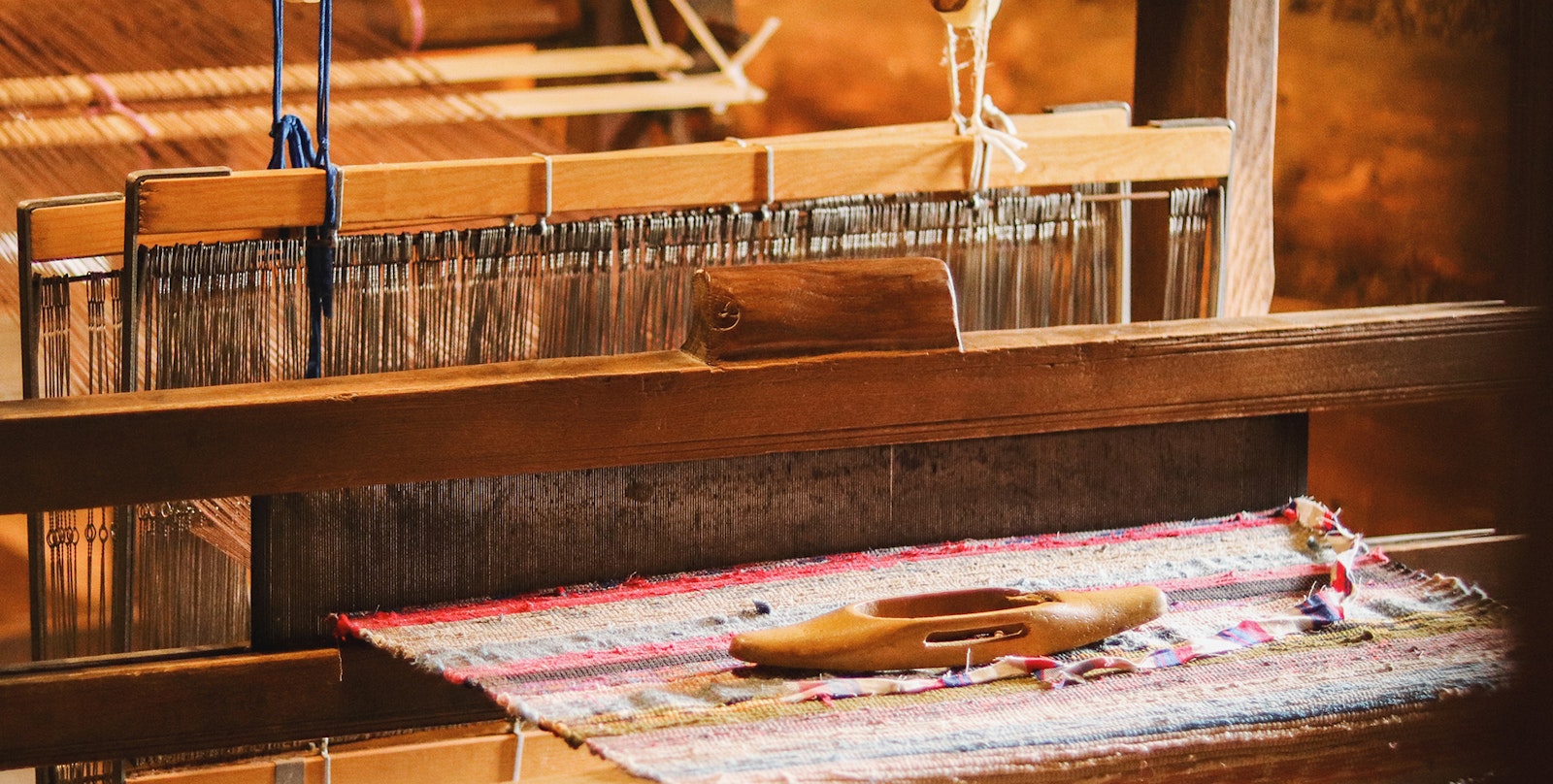At the most basic level, looms hold lengthwise threads taut while other threads are woven through them crosswise. There are several types of weaving looms with different features, but at their essence all of them perform this fundamental task. The threads that are held taut on a loom are called the warp, and the threads that cross the warp are called weft.
Once you understand the weaving process, it's easier to recognize the different types of weaving looms, and you'll have an idea of which types of looms are best for you!
Basics of Weaving & Looms
As they weave, the weaver lifts or lowers some of the warp threads to form an opening between them called a shed. The weaver then pushes the weft through that opening using a tool called a shuttle. Except for the most basic of looms, such as frame looms, all looms have some method for creating sheds. For example, on multi-shaft looms, warp threads are lifted or lowered because they are threaded through heddles that hang on frames called harnesses. When the weaver uses treadles or levers to lift or lower the harnesses, the warp threads threaded through heddles on those harnesses go up or down and create a shed. On simpler looms (inkle looms, backstrap looms, and rigid-heddle looms), the heddles are moved up or down manually to create the shed.
A weft-carrying shuttle can be as simple as a stick wrapped with thread or can be a fairly technical flying shuttle that zooms across the warp with the quick flick of a cord. In either case, as a shuttle moves through the shed across the warp, it leaves a trail of weft. Each pass of a shuttle through the shed is called a pick. After each pick, the weaver changes the shed by changing which warp threads are lifted or lowered and places the pick using a part of the loom called a beater that holds what is called a reed that resembles a very large comb in a frame. Placing a pick is called beating, except for the case of a heavy rug where placing is a better description.
Along with it's role in beating, the reed determines the spacing of the warp threads so that the resulting fabric is evenly woven. Backstrap and inkle looms rely on the natural tendency of threads to move together rather than spacing by a reed, and use the edge of a shuttle to beat. The rigid heddle on a rigid-heddle loom contains the heddles, reed, and beater; it creates the shed, spaces the warp threads, and beats in the weft.
Types of Looms
Backstrap Loom
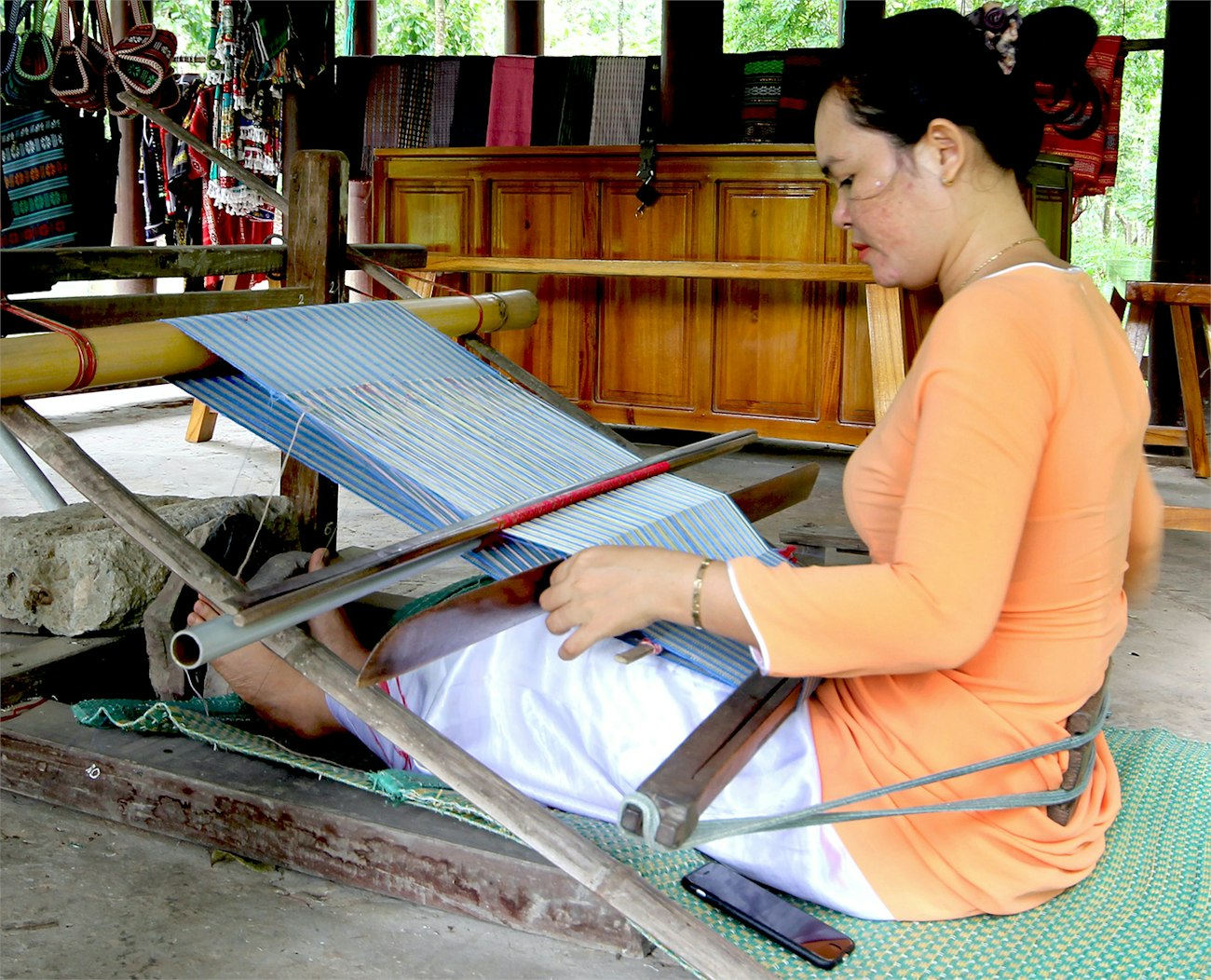 Backstrap loom. Photo by Claudette Bleijenberg on Unsplash
Backstrap loom. Photo by Claudette Bleijenberg on Unsplash
The backstrap loom is a simple loom developed by ancient civilizations and still used in many countries today. The warp is tied around a stationary object on one end and to the weaver at the other. The weight of the weaver keeps the warp taut. A skilled weaver can produce beautiful and complex patterns using a backstrap loom.
Tapestry Looms
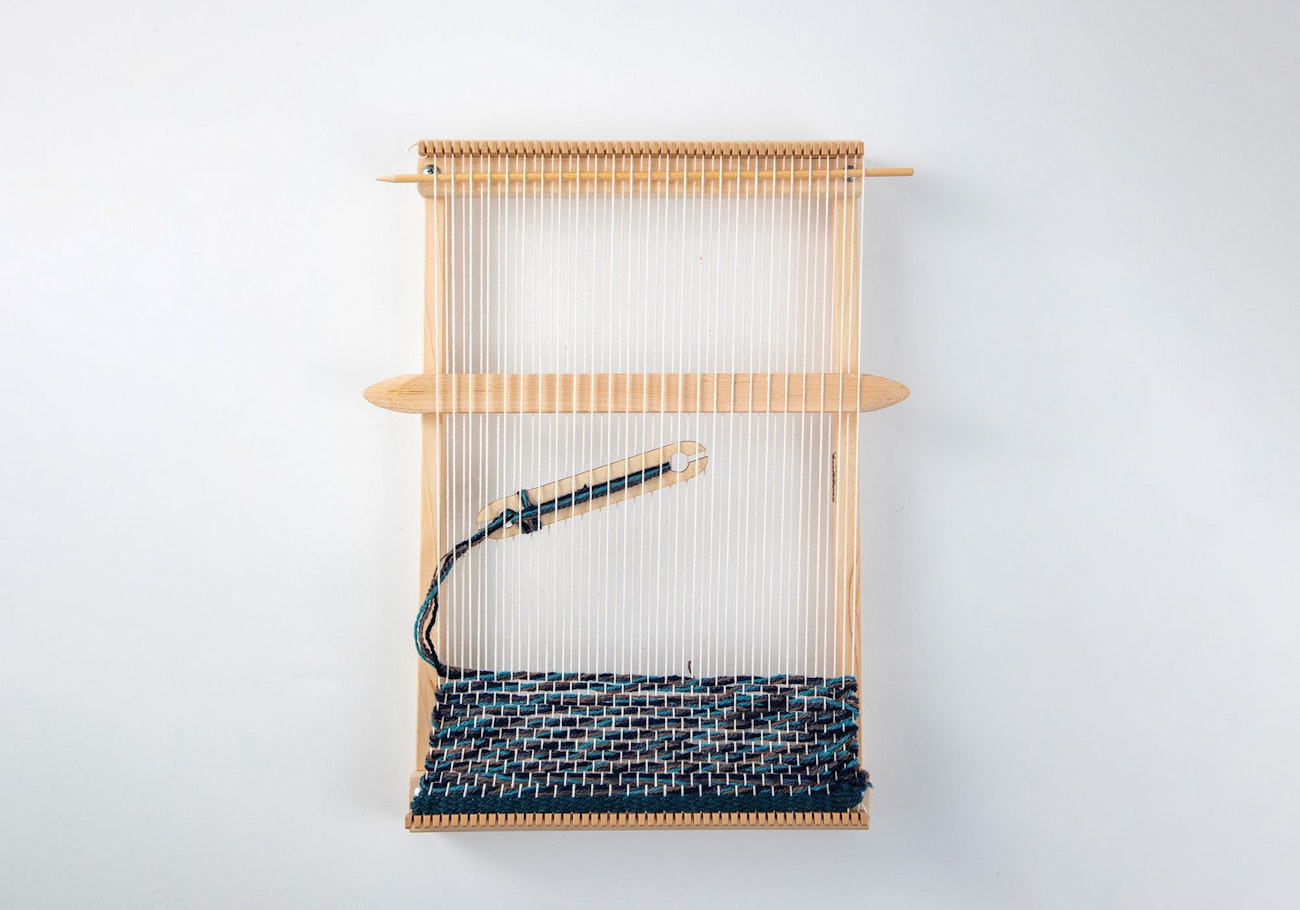 Tapestry loom. Photo by Matt Graves
Tapestry loom. Photo by Matt Graves
Tapestry looms include the simplest of looms, the frame loom. Frame looms do not have any ability to create a shed, and a tapestry you create on a frame loom is constrained to the size of the frame. Other types of tapestry looms hold longer warps and offer methods of creating a shed.
Inkle Looms
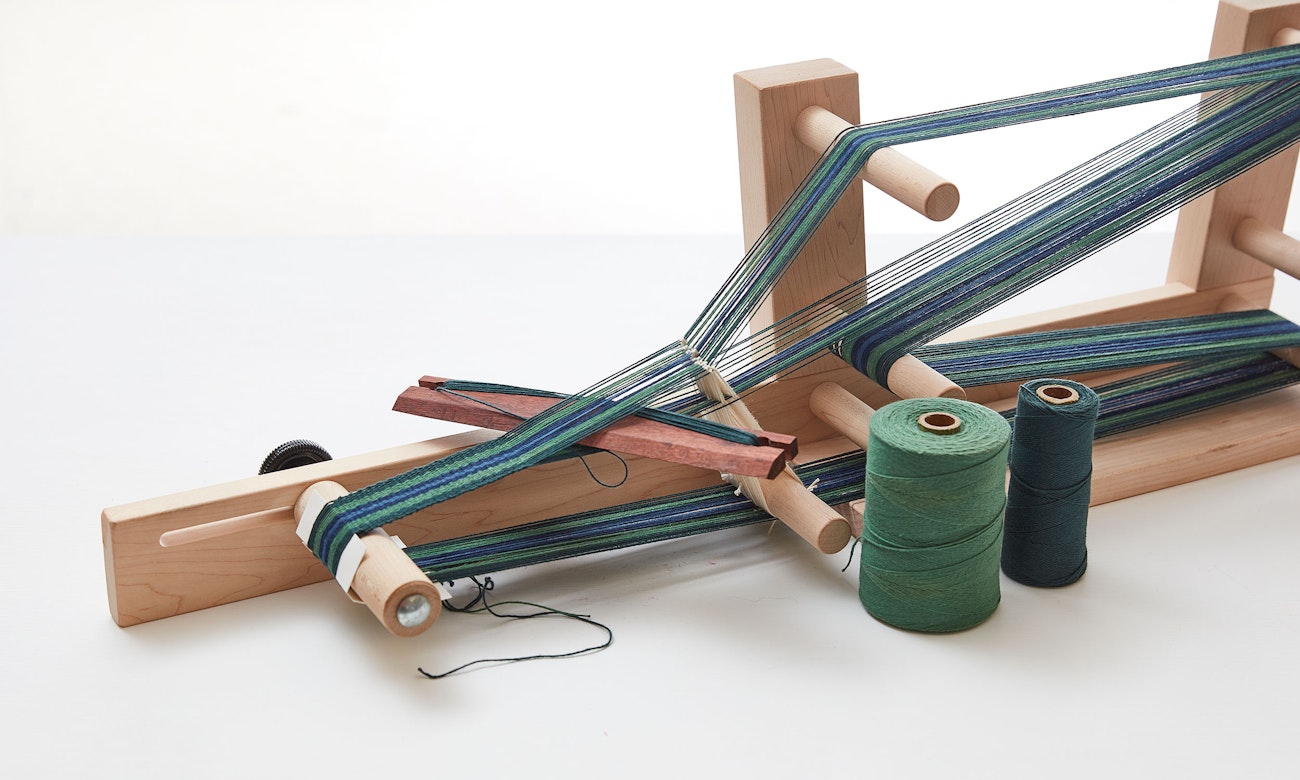 Inkle loom. Photo by George Boe
Inkle loom. Photo by George Boe
Inkle looms are used to weave narrow strips of fabric such as straps and belts. They are portable and while they are a great beginner’s loom, experienced weavers also use them to create complex patterns. The bands can serve as purse straps, dog collars, leashes, and many other items.
Rigid-Heddle Looms
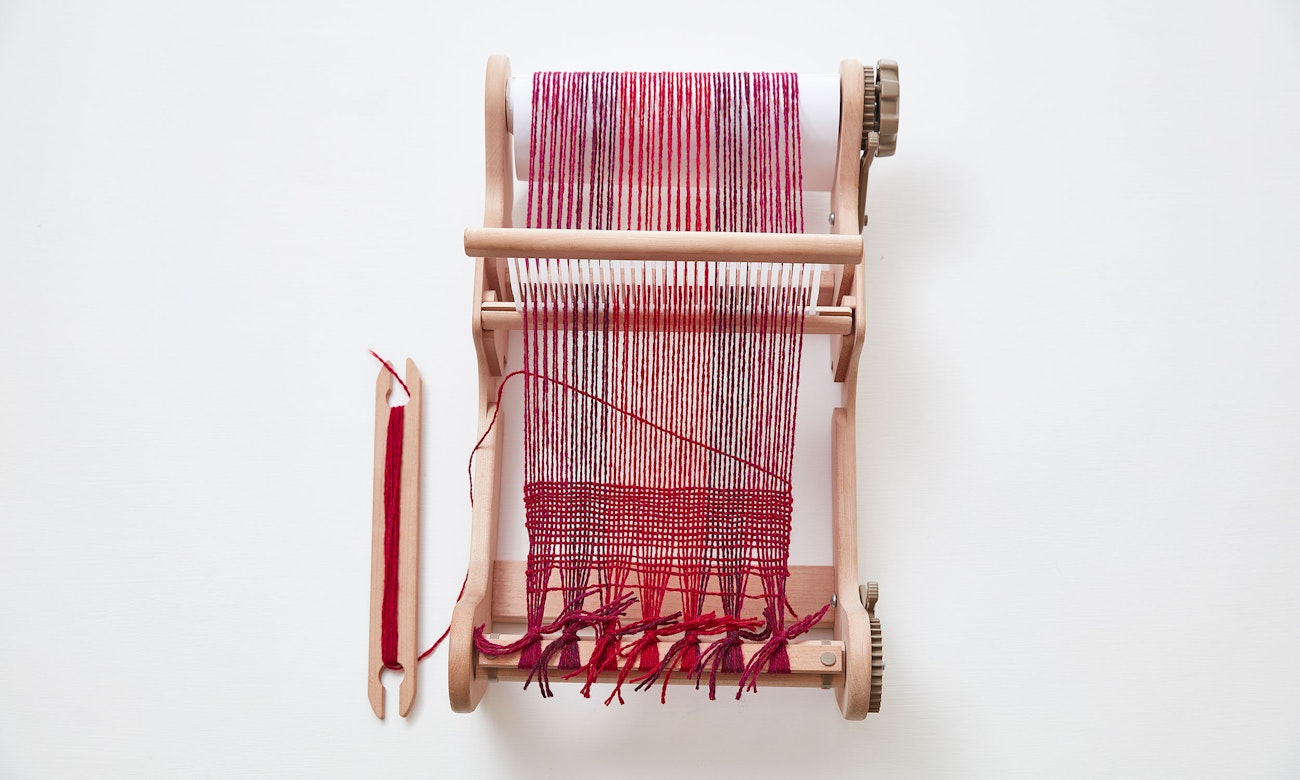 Rigid-heddle loom. Photo by Geoge Boe
Rigid-heddle loom. Photo by Geoge Boe
A rigid-heddle loom is a good beginner’s loom. It also offers a lot in terms of patterning to an experienced weaver through hand manipulation of the warp and weft. With one rigid heddle, they can be used for two-shaft weaving using yarns that are generally thicker than those used by multi-shaft looms. By adding another heddle, the weaver can use thinner yarns and weave more intricate patterns using pick-up sticks and hand manipulation techniques. Rigid-heddle looms are portable. They can be used with or without a stand.
Table Looms
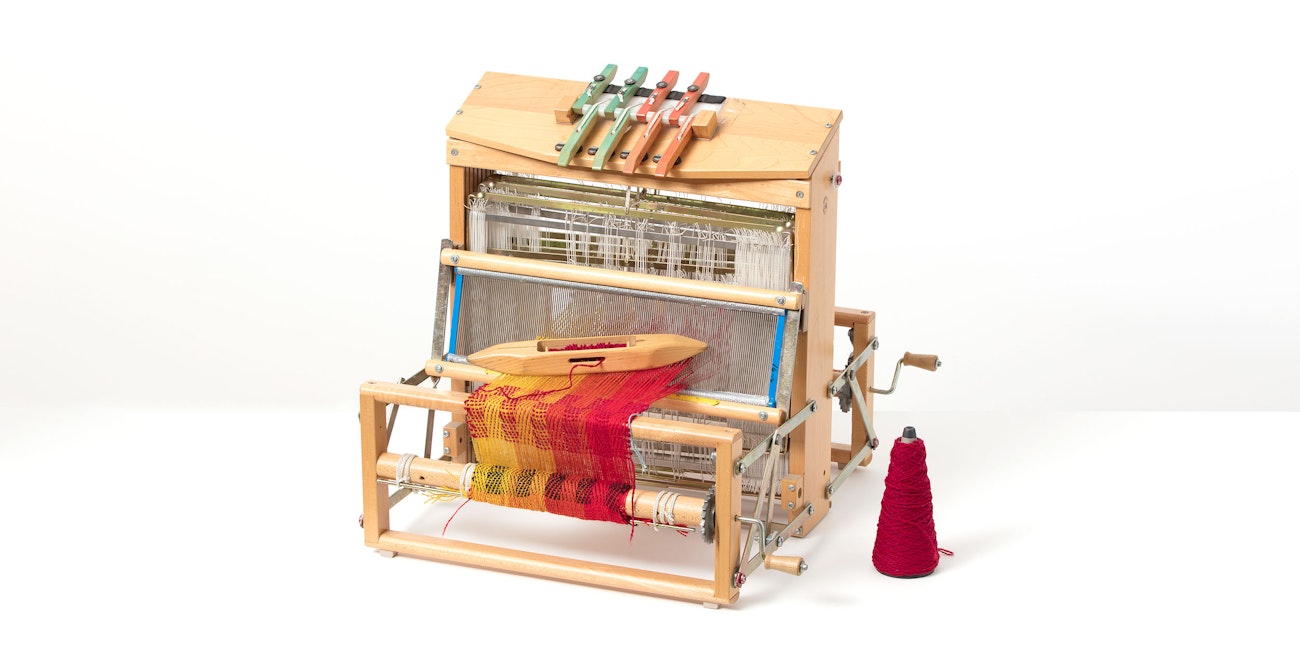 Table loom. Photo by George Boe
Table loom. Photo by George Boe
Table looms are smaller and more portable than floor looms but more complex than the other small looms in this list. They are made to be used on top of a table or on a stand. While you can get a table loom that has more than 8 shafts, the most common types have either 4 or 8.
Floor Looms
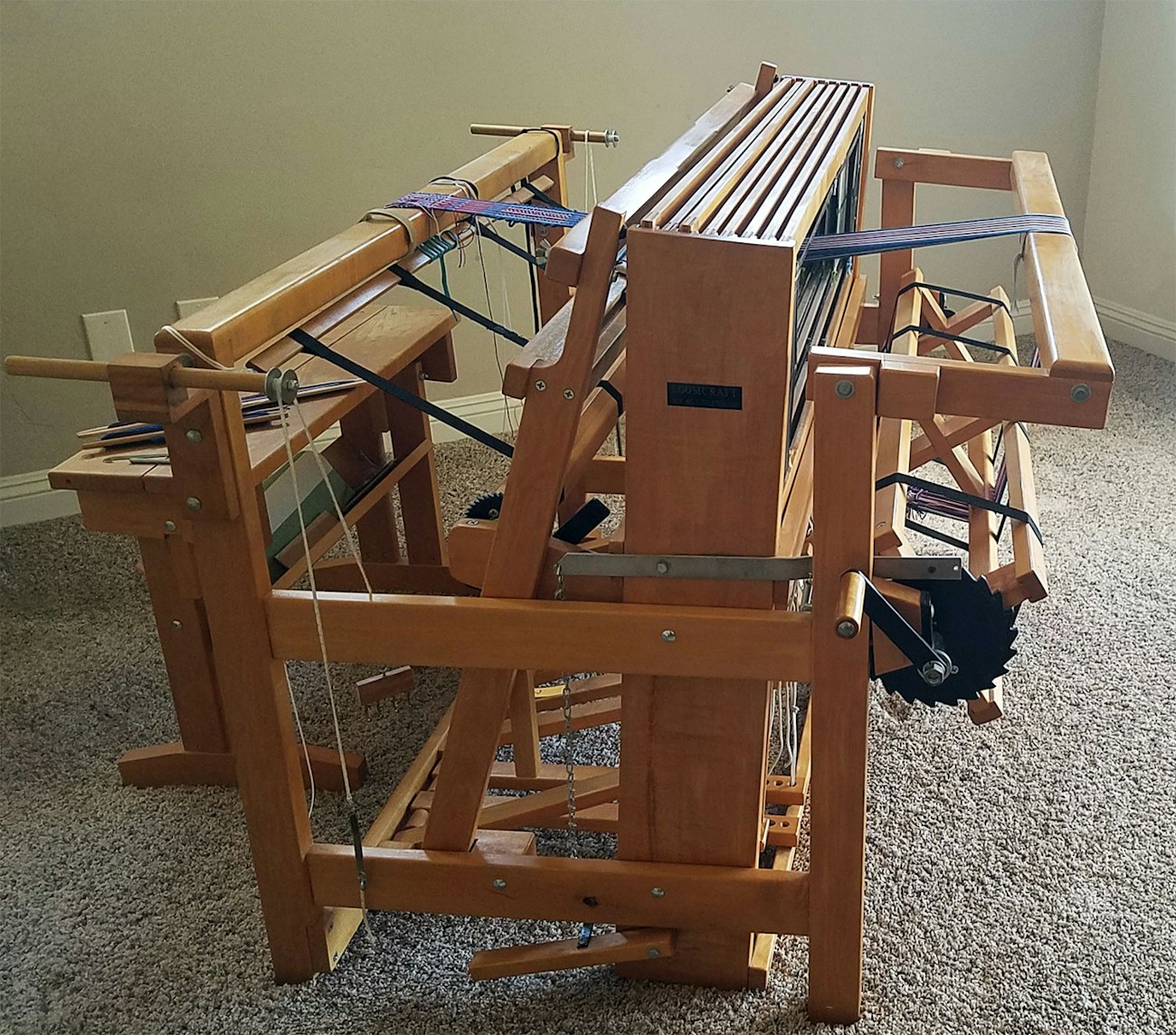 Standing floor loom. Photo by Susan E. Horton
Standing floor loom. Photo by Susan E. Horton
These are the largest of the home weaver’s looms. They’re freestanding and made for weaving larger projects. You can use a floor loom to produce longer and wider pieces of fabric, home linens, accessories, and rugs but they can also be used for smaller items such as scarves and coasters. Floor looms generally have either 4 or 8 harnesses but can have many more. Treadles controlled by the feet lift and lower the harnesses, but the harnesses can also be electronically or mechanically lowered or lifted by a dobby to create sheds.
What to Consider When Shopping for a Loom
There are several questions to ask yourself before you buy a loom.
What's your skill level? The first consideration you want to make is your weaving skill level. Are you an experienced weaver or are you just getting started? If you’re not sure whether or not weaving is going to stick as one of your hobbies, you may want to try a small loom first, such as a rigid-heddle, inkle, or table loom. If you already know you love weaving, then you should feel more comfortable investing in a large floor loom or even a more complex table loom.
What kind of fabric do you want to make? If you are interested in tapestry, then a frame loom or larger tapestry loom is an obvious choice. If you are interested in creating large pieces, a floor loom is the best choice. If you don’t really care about creating large pieces, than table or rigid heddle looms might work for you, although remember that you can weave most small pieces on large looms. If you want to make elaborate weave patterns, then a floor loom or a table loom with four or more shafts is your best choice. An inkle loom is a great choice if you want to weave bands and belts.
How much space do you have for a loom and equipment? A floor loom can have a very large footprint, whereas some of the other looms are quite small and can be put away when not in use. Floor looms and table looms also require other equipment such as warping boards and bobbin winders that the other looms don’t require.
As a rule of thumb, if you are looking for a bit more functionality than a frame loom, inkle and rigid-heddle looms are great beginners' looms. They are also good for children. Both looms are easy to master and fun to use. One step up from them are four-shaft table looms. They are more complex but still portable. Finally, the serious weaver should opt for a floor loom if they have the space, or an eight-shaft table loom if they don’t. These looms offer the ability to produce complex weaving patterns.
Originally published April 24, 2018. Revised August 2, 2022

